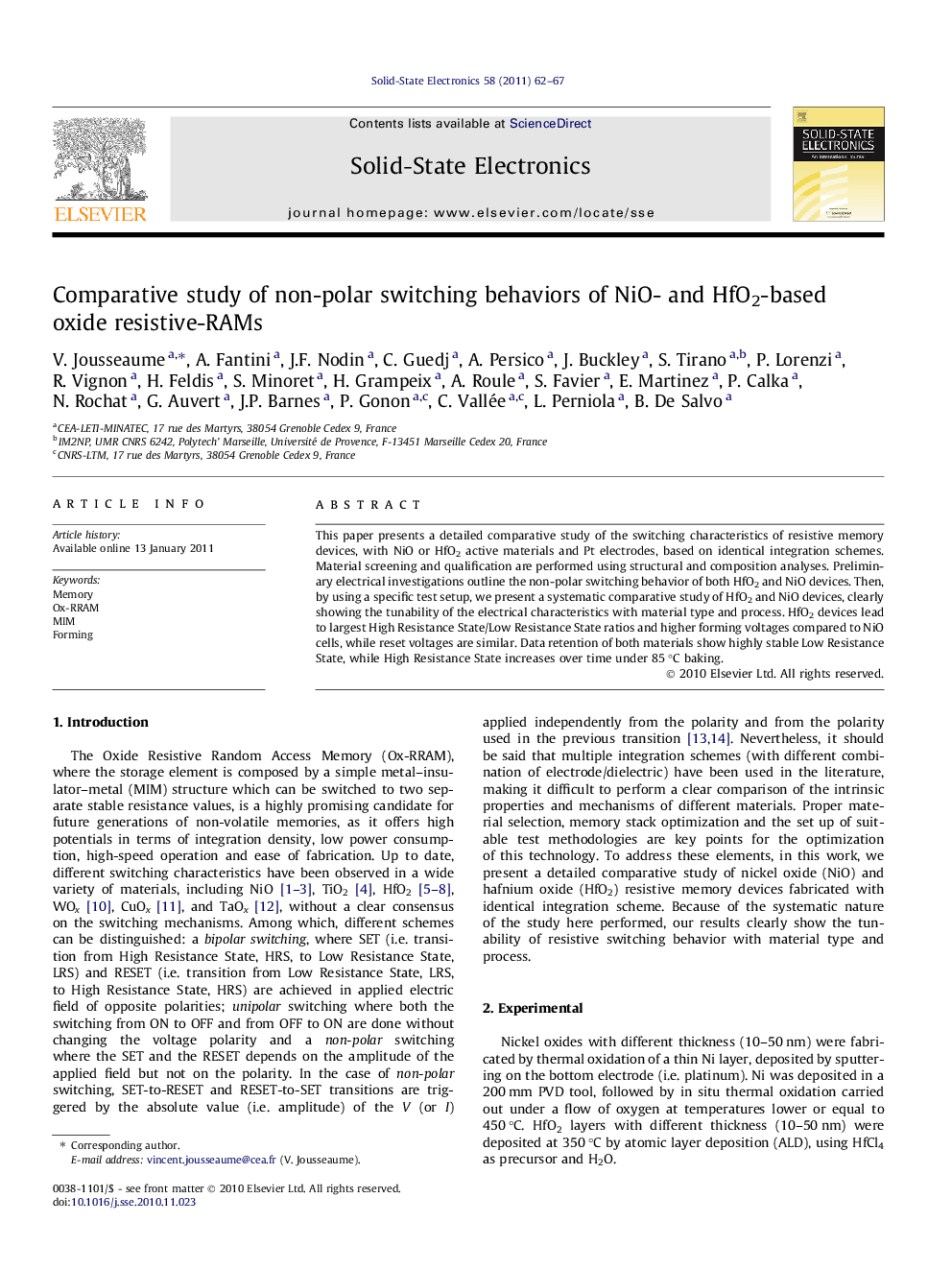| Article ID | Journal | Published Year | Pages | File Type |
|---|---|---|---|---|
| 747169 | Solid-State Electronics | 2011 | 6 Pages |
This paper presents a detailed comparative study of the switching characteristics of resistive memory devices, with NiO or HfO2 active materials and Pt electrodes, based on identical integration schemes. Material screening and qualification are performed using structural and composition analyses. Preliminary electrical investigations outline the non-polar switching behavior of both HfO2 and NiO devices. Then, by using a specific test setup, we present a systematic comparative study of HfO2 and NiO devices, clearly showing the tunability of the electrical characteristics with material type and process. HfO2 devices lead to largest High Resistance State/Low Resistance State ratios and higher forming voltages compared to NiO cells, while reset voltages are similar. Data retention of both materials show highly stable Low Resistance State, while High Resistance State increases over time under 85 °C baking.
Research highlights► Resistive memories with NiO or HfO2 as active materials and Pt electrodes. ► Devices fabricated with identical integration scheme. ► Both oxides present non-polar switching. ► HfO2 devices lead to largest High Resistance State/Low Resistance State ratios. ► Electrical data are consistent with the filamentary hypothesis.
